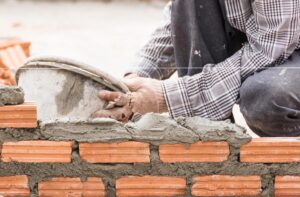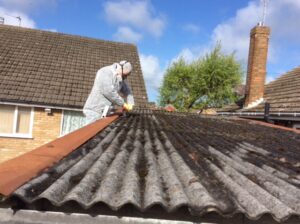There are several routes to becoming a general construction operative, including attending a technical college or completing an apprenticeship. Some apprenticeships even offer a full salary and on-the-job training.
A general contractor oversees all aspects of a project, from design to the finished product. They also work with specialty contractors and subcontractors to complete the work. For more information just visit Letterbox Perth.

Construction is a massive industry that encompasses a wide variety of specialties. One particular area of focus is general construction, which covers building and renovating structures such as homes and offices. General contractors are responsible for planning, budgeting, and overseeing construction. They work closely with architects, engineers, and other professionals to ensure that all aspects of the construction process are carried out according to plan.
The term general construction can also be used to refer to any construction project, whether it is commercial or residential. The difference between commercial and public construction is that commercial projects typically require more specialized equipment and techniques and are generally more expensive to complete than general projects. Examples of commercial construction include skyscrapers and hotels. General construction, on the other hand, refers to a wider range of projects, from residential homes to office buildings.
A general contractor is responsible for hiring subcontractors to perform the various jobs needed on the construction site. They are also responsible for preparing accurate estimates and bids on multiple jobs. In addition, they are the dispenser of money for a construction project, taking advances from the developer’s construction lender and paying out those funds to the various subcontractors and material suppliers.
While many responsibilities are associated with being a general contractor, maintaining safety on the construction site is the most important. This includes ensuring that all construction workers are properly trained, and all safety regulations are followed. A general contractor is responsible for ensuring that the project’s specifications are met, all materials are purchased, and all required permits have been obtained.
General contractors should be passionate about their work. This means they will strive to meet deadlines and do whatever it takes to get the job done. In addition, they should be able to communicate effectively with the design team, architect, and subcontractors.
The current labor shortage is putting pressure on construction firms to find ways to improve efficiency and reduce costs. Some companies are responding to this challenge by increasing salaries and benefits, while others are turning to technology to help recruit the next generation of workers. This includes tools such as SafetyCulture, which can help to streamline communication and boost productivity.
A general contractor oversees the overall construction of a building or large-scale project. They are responsible for daily oversight of the construction site and management of all vendors and subcontractors. They also ensure that work is completed to specifications and budget. This is accomplished by establishing a contract with the owner and then providing them with a schedule of completion for the project as well as a detailed cost breakdown of all aspects of the construction process.
A GC often employs a team of experienced financial management professionals who can help with accounting, bookkeeping, and budgeting. This is an important aspect of their job because it helps to ensure that the project stays within budget, which is essential for a successful construction project.
Depending on the size and scope of the construction project, a GC may hire subcontractors to handle specific work segments. For example, this includes plumbing, electrical, or roofing contractors. Typically, these contractors report to the general contractor and are hired per job to complete specified tasks for a predetermined price. The GC must ensure that these contractors are properly trained and have the proper job equipment.
As the primary point of contact on the construction site, the GC must resolve any disputes between contractors, subcontractors, or suppliers. This is an important part of the GC’s duties because it can affect the project timeline, quality, and safety. GCs also must ensure that they have the correct insurance coverage for their business, which is usually required to get licensed in most states.
A GC must have a keen eye for detail to manage the construction of a complex structure and ensure that all materials and labor are being used efficiently. This is especially critical for projects that require extensive excavation and earthmoving. GCs must be familiar with all local regulations and requirements for excavation, including permits and inspections. They must also know the proper way to dispose of excavated materials. This involves coordinating with municipalities and other agencies.
There are no specific educational qualifications for a general construction operative, but getting work experience in the field can be helpful. This can be done through volunteer projects, working weekends or holidays for family businesses, or completing an apprenticeship program. Many apprenticeships offer on-the-job training, classroom instruction, and certifications to earn a wage while learning a trade.
Regardless of their industry, general operatives must know the tools of the trade and how to operate heavy machinery. They often have to use heavy vehicles, like forklifts and cranes, on building sites or in warehouses. This may include ensuring these vehicles are in good condition and knowing how to perform basic maintenance.
In manufacturing or shipping industries, general operatives may direct production processes. This involves leading teams of employees to ensure that each step in the production process is completed before moving on to the next step. This can be not easy to manage, as it requires a lot of attention to detail and knowledge of safety procedures.
It’s also important for general operatives to follow all safety guidelines while on the job. This includes following all safety precautions while operating machinery and keeping the site clean to prevent accidents. This is especially true if they work with dangerous materials, as it can protect their fellow workers on the construction site.
Being physically fit is also important for this type of job. General operatives are often required to lift and move heavy materials, so they must be strong enough to complete their tasks. This can be challenging if they are in good shape, so it’s a good idea for these professionals to maintain a healthy lifestyle and exercise regularly. They also spend much time on their feet, so wearing comfortable shoes is important. The work environment can be hot and humid, so it’s essential to dress appropriately. This can help prevent heat strokes and other health issues while ensuring they are comfortable throughout the day. Taking frequent breaks and staying hydrated can help, too.
There are many routes to becoming a general construction operative, including college courses and apprenticeships. Each route has its costs and benefits, so it is important to consider each option carefully. Many apprentices receive a wage while they learn the trade, which can help ease the cost burden. Depending on the type of work you want, you may also have to pay for your training materials or tools.
Once you have the right qualifications, you can begin working in the field and building your resume. Obtaining experience in various projects will give you a well-rounded background and make it easier to become a general contractor. Some states require that you have several years of experience to gain a license, so it is best to start working towards this goal early.
General construction is a large industry with many opportunities, and keeping up with the latest trends and developments is important. In particular, it is important to use innovative practices such as prequalifying subcontractors, streamlining paperwork, and maintaining open lines of communication. These steps can help to reduce risk and increase project profitability.
It is also important to keep up with state and county regulations regarding licensing and insurance. Additionally, finding a general contractor with whom you can build a strong relationship is important. This will help ensure the job is completed on time and within budget.
The job prospects for a general construction operative are excellent, especially considering the industry’s shortage of skilled craft workers. According to the Associated General Contractors of America, 89% of their members struggled to fill positions for pipelayers and glaziers in 2022. Therefore, it is a great time to consider a career in construction!
A general construction operative can expect to earn about $91,000 per year. However, the salary will vary based on the company’s size and expertise. The overall outlook for the profession is positive, with an expected growth rate of 5% in the next decade.

